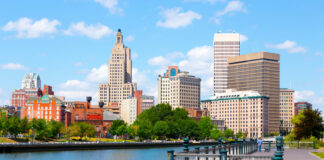
While we were visiting New Orleans this week for Business Facilities’ annual LiveXchange event, we came across an article in Sunday’s edition of the Times-Picayune detailing an interesting quandary confronting historic preservation districts when they try to address the need to convert to alternative energy.
According to the New Orleans daily, Big Easy resident Glade Bilby ran head-on into this quandary when he was proceeding with renovations on his three-story brick townhouse on Esplanade Ave. in the French Quarter. Bilby had no problems when he installed a rainwater collection system and added a foil radiant barrier in his attic to cut down on heat loss in the winter and provide insulation from the summer’s brutal heat.
But Bilby apparently crossed an invisible line when he tried to take advantage of state and federal tax credits being offered to homeowners this year for energy efficiency improvements. Bilby wanted to place about $50,000 worth of photovotaic solar panels on the roof of his house, something that thousands of homeowners across the country are doing to generate an alternative source of electricity.
Although local housing officials boast that solar and other energy-efficient technologies are beginning to take hold in New Orleans as it continues to rebuild from the devastation of Hurricane Katrina, Bilby’s project would be the first of its kind in the French Quarter, which maintains as its top priority the preservation of its old-timey, wrought iron authenticity.
Despite a staff recommendation to approve the project, the Vieux Carre Commission, the city’s regulatory agency for the French Quarter, denied Bilby’s application for the work in a close vote on Oct. 19.
According to the Times-Picayune report, preservationists have struggled to set standards for incorporating new technologies and energy-efficiency improvements into historic buildings in an area populated by homes that in many cases were built before electricity was available. Ironically, the newspaper notes, the French Quarter was green before it was cool to be green.
A French Quarter resident for more than three decades, Bilby plans to appeal the ruling to the New Orleans City Council this month. Bilby noted that actor Brad Pitt has made green building features central to his redevelopment effort in the city’s battered Lower 9th Ward, which was almost wiped out by Katrina. Many of the new structures put up in the 9th Ward in Pitt’s Make It Right campaign have been loaded with features geared to attaining net-zero electric use.
Commission members who backed Bilby cited “a myriad of preservation organizations…[which] have recognized the synergy between preservation and sustainable development” and concluded that “incorporating comparable green building technologies into historic buildings is an important endeavor that improves the long-term sustainability of communities,” according to commission records.
We suspect this debate won’t end until someone invents a solar panel that can mimic the original materials of an authentic old-time roof. Perhaps the folks at Dow, who are preparing to commecialize their breakthrough Powerhouse solar shingles, can figure out a way to project a hologram onto the surface of the shingles.
Meanwhile, we remain confident that a vibrant and unsinkable city that was the birthplace of jazz eventually will come up with a creative solution that finds a way to blends history with progress. Based on our recent visit, we’d like to suggest fat-free beignets as a starting point.













![[VIDEO] Get More for Your Business in Ardmore. Oklahoma](https://businessfacilities.com/wp-content/uploads/2024/02/maxresdefault-324x160.jpg)
